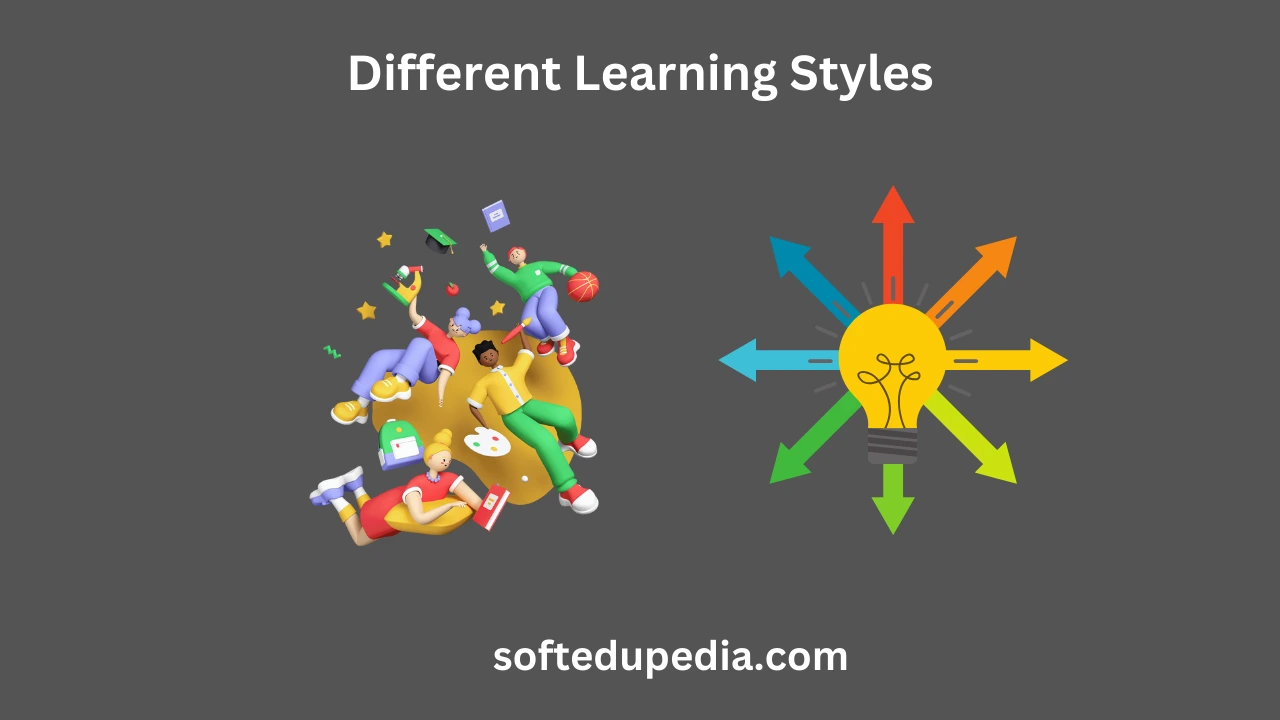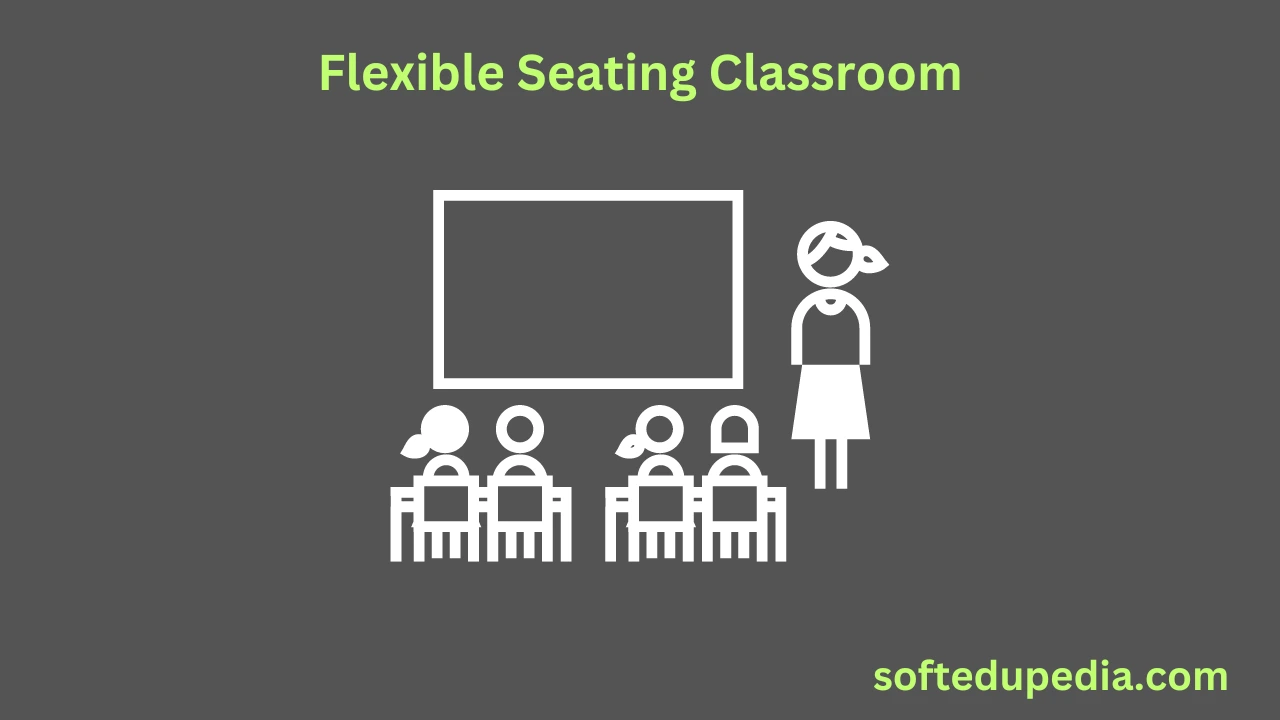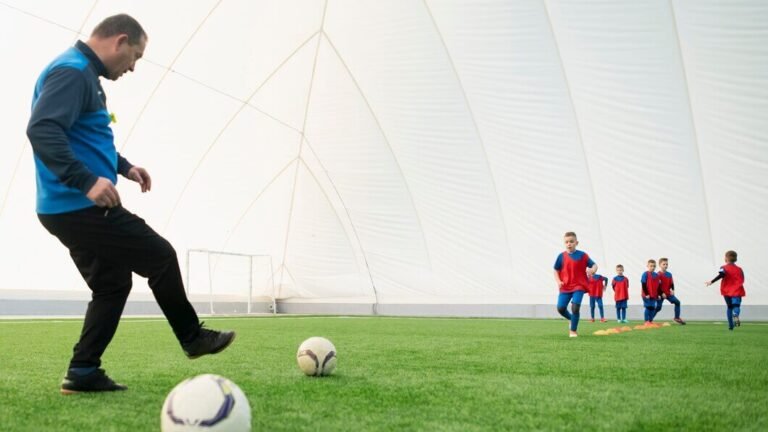Flexible Seating Classroom: A Game-Changer in Education
The use of flexible seating in classrooms is not only a transient fad but rather a substantial educational transformation. Recent analyses indicate that classrooms that use flexible seating see a 20% rise in student involvement and a significant enhancement in academic achievement. This increase in popularity underscores an increasing acknowledgement of the necessity for flexible and customizable learning environments that accommodate the varied demands of students.
Flexible seating is the strategic provision of diverse seating alternatives to students, extending beyond the conventional arrangement of desks and chairs. This novel methodology for classroom layout enables students to select from a variety of sitting options, including bean bags, wobbling stools, or standing desks, according to their individual tastes and particular learning requirements. As schools and educators strive to provide more inclusive and engaging learning environments, the notion has gained popularity in contemporary education. The objective of flexible seating is to create a more interactive and pleasant atmosphere that accommodates different learning styles and promotes active involvement by deviating from inflexible, standardized seating arrangements.
The implementation of flexible seating is fundamentally changing classroom settings by reinventing the manner in which students engage with their learning environment and one another. In addition to fostering student participation and cooperation, this method also accommodates various learning styles and encourages physical activity. Consequently, the use of flexible seating arrangements leads to enhanced student achievements, such as elevated academic performance, improved classroom conduct, and heightened general contentment with the educational process. Through the use of flexible seating, educators are establishing classrooms that are more adaptable to the requirements of contemporary learners and more capable of preparing them for future educational achievements.
Table of Contents
What is a Flexible Seating Classroom?
Classrooms with flexible seating challenge the conventional wisdom of rows of desks and chairs. Rather, these classrooms include a range of seated choices including floor cushions, bean bags, standing desks, wobbling stools, and more. The goal is to establish flexible and pleasant surroundings that meet the many demands of the pupils. This method acknowledges that different students might benefit from various kinds of seating configurations as learning is not a one-size-fits-all process.
Flexible seating seeks to empower students by letting them choose seating that best fits their learning style and preferences. Flexible seating helps to foster responsibility for the learning environment, therefore improving engagement and motivation. Furthermore, it encourages a more dynamic and cooperative classroom environment as students are not limited to one area but may circulate and engage more naturally.
Though comfort is a major advantage, movable seating serves purposes beyond only convenience. It also concerns raising academic results. Studies have found that pupils who feel at ease and in charge of their surroundings are more likely to concentrate and interact with the given content. Furthermore, as kids are less prone to feel restless or limited, flexible seating can aid in lowering behavioral problems. A flexible seating classroom is essentially meant to facilitate a range of learning activities and approaches, so it is a flexible and inclusive classroom.
Benefits of Flexible Seating Classrooms
Here are some benefits of the above:
Student involvement
Flexible seating classroom has several advantages outside simple comfort. Greater student involvement is among the most important benefits. Students who are allowed to select where they sit and are comfortable are more likely to engage actively in class activities. Better knowledge and memory of the taught content resulting from this increased involvement helps to improve academic success by utilizing retention of the subjects.
Improved Cooperation
It is yet another important advantage. Flexible seating lets students roam around and work in groups more readily. While flexible seating encourages students to communicate, discuss ideas, and work on projects, traditional sitting sometimes isolates them in rows. Along with creating a feeling of community in the classroom, this cooperative environment helps kids acquire critical social skills including communication, teamwork, and dispute resolution.
Facilitate Learning Approaches
Flexible seating classroom facilitates several learning approaches. Not all students study best seated motionless at a desk; some may benefit from standing, some from sitting on a soft surface, and others from shifting between many kinds of seats during the day. Providing a range of seating choices helps instructors to more effectively meet the particular requirements of every student, therefore fostering a more inclusive and encouraging classroom.
Physical Fitness
Additionally encouraged by flexible sitting is physical fitness. Conventional desks and chairs can aggravate bad posture and pain, therefore distracting pupils and compromising their learning environment. Options for flexible seating—such as exercise balls or standing desks—help pupils keep better posture and promote mobility. This greater mobility can also aid in lower restlessness and keep kids more concentrated on their work.
Designed to be student-centered overall, flexible seating classrooms encourage participation, teamwork, and comfort while accommodating a variety of learning approaches. These adjustments will help teachers to build a more dynamic and efficient classroom that satisfies the requirements of every student.
How Flexible Seating Boosts Student Focus
One widely acknowledged effective strategy for improving classroom student attentiveness is flexible seating. Conventional classroom environments, in which pupils are limited to stiff desks and chairs, can fail to allow children’s natural mobility and varied comfort demands. Conversely, flexible seating provides a more dynamic and adaptive learning environment that can greatly increase focus and attention span.
Reducing Physical Pain
Reducing physical pain is one of the main ways Flexible seating increases student concentration. Uncomfortable students find it challenging to keep their attention on the course of instruction. By letting students select a posture that seems comfortable for them, flexible sitting choices—such as wobbling stools, standing desks, or soft cushions—allow them to minimize distractions brought on by physical pain. This comfort lets pupils stay involved for more extended times and focus better.
Promotes Mobility
Furthermore, flexible sitting promotes mobility, which is essential for keeping concentration—especially in younger children. Many times, traditional classroom environments call for students to remain motionless for long periods, which could cause restlessness and a drop in focus. Stability balls or standing desks are among the flexible seating choices that let kids move organically, therefore releasing energy and preserving attention. Movement has been demonstrated to boost blood flow and oxygen to the brain, therefore improving cognitive ability and maintaining student alertness.
Freedom to Decide
Still another crucial component is the element of choice flexible seating offers. Giving pupils the freedom to decide where and how they sit helps them to take charge of their classroom. Since students believe more of their success is their own responsibility, this autonomy can inspire more involvement in the learning process. Motivated pupils are more likely to keep concentrated and involved.
All things considered, flexible seating addresses physical comfort, promotes mobility, and gives pupils options so supporting their attention. Flexible seating serves to reduce distractions and improve focus by allowing an atmosphere that fits every student’s demands, therefore improving the learning results.
Flexible Seating and Classroom Management
While flexible seating in a classroom might provide special difficulties, with the correct techniques it can also result in a more pleasant and effective classroom. Teachers’ biggest worries regarding flexible seating centre on how to keep discipline and order when pupils are not limited to conventional desks. When used properly, though, flexible seating may actually help to support improved classroom management by encouraging student responsibility and teamwork.
Establishing Clear Expectations
Establishing clear expectations and rules from the start is one of the main approaches for running a flexible seating classroom. Pupils must realise that flexible seating is a luxury accompanied with obligations. Teachers should spell out certain guidelines for using various seating choices, including when it is suitable to use particular kinds of sitting, how to take turns, and how to honour others’ choices. Early on defining these standards helps kids to be more inclined to follow them and make deliberate choices about their seats.
Disciplined Schedule
Developing a disciplined schedule with mobility and transitions is another crucial component of handling flexible seating. Although flexible seating enables more fluid mobility in the classroom, it is necessary to control these changes to avoid anarchy. Teachers could notify when it’s time to move between tasks or change seats using timers, cues, or signals. This arrangement lets pupils move and pick their seat while yet preserving discipline.
Evaluation and changing Seating Plan
Teachers should also routinely evaluate and change the seating arrangement to guarantee it satisfies the requirements of the class. Not every kid will flourish in every kind of sitting, hence it’s crucial to be adaptable and open to changing things as required. Based on student comments and observations, this might entail changing the seating choices or adding fresh varieties.
The Climate of Respect and Collaboration
In a flexible seating arrangement, developing a classroom climate of respect and collaboration is vital. Pupils should be urged to help one another to make wise decisions and settle problems. Teachers may help to encourage this by modeling polite behavior and giving pupils chances to work together and talk about their preferred seats.
In essence, flexible seating could result in a more involved and cooperative classroom even if it calls for careful planning and administration. Teachers may effectively control a flexible seating classroom and establish an atmosphere in which every student may flourish by clearly defining standards, developing disciplined routines, and promoting a pleasant classroom climate.
Setting Up a Flexible Seating Classroom
Starting a flexible seating classroom may be both thrilling and difficult. Following a methodical strategy will help to guarantee a seamless transition and maximize the advantages of flexible seating. From design and seat choice to space arrangement and student expectations, this part will offer a thorough manual on how to set up a flexible seating classroom.
Step 1: Assess Your Space and Needs
Examining your classroom environment and considering the particular requirements of your pupils can help you decide what modifications to make. Consider the dimensions of your room, the student population, and the kinds of events occurring. Think about how best to maximize the area to fit many seating choices and guarantee ample room for movement and teamwork. To guarantee that the seating choices you select are inclusive and encouraging, carefully consider the unique needs of your students—including those with special needs.
Step 2: Choose a Variety of Seating Options
Successful flexible seating depends on providing a range of chairs that fit various learning environments and preferences. Think about including floor cushions, bean bags, stools, classic chairs, floor cushions, and even more unusual choices like exercise balls or rocking chairs. Standing desks Every kind of chair should have a specific role, including supporting group projects, promoting mobility, or allowing targeted work. Including students in the choosing process helps to guarantee that the available seating alternatives satisfy their requirements and tastes.
Step 3: Arrange the Seating to Maximize Space and Accessibility
After you have chosen your seating choices, it’s time to set them up such that space is used as best it can be and accessibility is promoted. Set aside areas in the classroom for various uses, including a quiet spot for solo work, a group project workspace, and a cozy reading nook. Make sure paths are clear and that every kid can quickly access every seating choice. The layout should also be flexible enough to let one simply change or reposition seating as required.
Step 4: Set Clear Expectations and Guidelines for Students
Establishing a flexible seating classroom calls for open communication with the students on norms and expectations. Describe the advantages of flexible seating and its goals; then, let students help to create guidelines for using the several seating choices. Talk about how students should pick their seats, how to honor other people’s choices, and how to move between desks during the day. Establishing these rules from the start would guarantee a flawless and effective classroom and allow students to realize their obligations.
Budget-Friendly Tips
Changing to flexible seats isn’t costly either. Among the numerous reasonably priced choices include recycling old furniture, looking for donations, or requesting school grants. To provide reasonably priced seats, teachers could also think about do-it-yourself projects including building lap desks or cushions. Including kids in these initiatives will also allow them to develop pride and responsibility in their newly appointed classroom.
These guidelines can help teachers effectively arrange a flexible seating classroom that improves student involvement, comfort, and learning results. The secret is to be deliberate and careful during the design phase so that the seating arrangement satisfies the demands of every pupil.
Adapting Flexible Seating for Different Learning Styles

The capacity of flexible seating to fit many learning environments is among its main benefits. Students in any classroom process knowledge and interact with the content in different ways; flexible seating gives the adaptability required to meet these diverse demands. Providing a variety of seating choices helps teachers build a more inclusive classroom where every kid has a chance to flourish.
Visual Learners
Having visual ways of seeing and processing knowledge—such as charts, diagrams, and written directions—helps visual learners. These students might want flexible seating arrangements that let them observe the board or present materials. While standing desks let students move closer to visual aids as needed, conventional desks set in a semicircle around the front of the room can give an unhindered view. Furthermore, free movement in sitting helps visual learners rearrange themselves to better see visual resources, therefore improving their capacity to absorb and remember knowledge.
Kinesthetic Learners
Kinaesthetic learners flourish on hands-on exercises and movement. Many times, these kids struggle in conventional seating configurations that call on them to remain still for long stretches. For kinaesthetic learners, flexible seating choices include exercise balls, standing desks, or wobbling stools that let them move and fidget without upsetting the classroom. This movement facilitates their information processing and allows them to remain interested and attentive. For kinaesthetic learners—who can physically interact with the content being taught—offering stations or spaces with manipulatives and hands-on activities can also help.
Inclusive Environment
An inclusive classroom satisfies every student’s requirements independent of their learning style or ability level. An outstanding approach to creating such an environment is flexible seating as it lets one choose from a variety of options that may be customized to fit personal preferences. Flexible seating can offer the required support for kids with special needs so they may fully engage in classroom activities. A student with sensory processing problems, for instance, might benefit from a quiet nook with soft seats; a kid with focus problems could need a seating arrangement that lets them move often.
By letting students select their sitting depending on what would be most comfortable for them, teachers help to create inclusive surroundings. Along with empowering students, this autonomy promotes respect for all learning styles and a sense of belonging. Teachers should often follow up with their pupils to make sure the seating choices still satisfy their needs and to make required changes.
All things considered, flexible seating is a great tool for handling the several learning approaches found in every classroom. Teachers can build a more inclusive and motivating classroom that supports achievement for every student by providing a range of seating choices and pushing pupils to decide what best suits them.
Flexible Seating: A Transformative Approach in Education
More than merely a trend, flexible seating is a transforming method of instruction fit for contemporary pedagogy. With their strict rows and identical desks, traditional classroom configurations—which are seen as antiquated and unfit for the demands of students in the twenty-first century—are under scrutiny more and more Conversely, flexible seating shows a move towards student-centered learning, in which the physical surroundings are customized to meet the several requirements, preferences, and learning styles of the pupils.
Long-Term Impact
Beyond only increasing student involvement and behavior, flexible seating has long-term effects. Flexible seating helps to create a better school culture where students feel appreciated and encouraged by encouraging a more comfortable and cooperative learning environment. This can result over time lower absenteeism, more student happiness, and better academic performance. Furthermore, the abilities kids acquire in a flexible seating classroom—such as self-regulation, decision-making, and cooperation—have applications in various spheres of their lives, thereby arming them for success outside the classroom.
Future of Classrooms
The idea of the conventional classroom is being redressed as education develops. Emphasizing the creation of environments that improve learning and well-being, classrooms are probably going to be more flexible, adaptive, and student-centered going forward. A major component of this approach is flexible seating as it lets one further personalise the classroom. Reflecting a larger trend towards more individualized and flexible learning environments, schools are progressively including components of flexible seating into their designs, from elementary classrooms to higher education institutions.
Encouraging Innovation
Flexible seating promotes creativity in teaching strategies as much as in classroom layout. Teachers who reject conventional seating configurations are forced to reconsider their teaching strategies and investigate fresh approaches to involving their pupils. Because teachers may quickly set seating to fit various activities—from group projects to solo study—this results in more dynamic and participatory sessions. Furthermore, the focus on student choice and autonomy fits contemporary educational ideas stressing active learning and student agency.
Flexible seating reflects a change towards a more whole and student-centered method of instruction overall. It enables learning settings to fit for today’s students by giving comfort, choice, and teamwork top priority. Flexible seating will probably become more and more crucial as education develops in determining the future classrooms.
Improved Student Engagement
Flexible seating is meant to empower students with choice and flexibility therefore creating a more interesting classroom atmosphere. Conventional seating sometimes forces a passive learning environment when pupils are limited to the same seat for long periods. Particularly for students who struggle to sit still or want more active means of interacting with the learning content, this arrangement might cause boredom, restlessness, and disengagement.
Range of Choices
Flexible seating, on the other hand, gives students a range of choices so they may choose the kind of sitting that fits their particular needs and inclinations. Students who feel more in charge of their educational process will be much more engaged. Students who feel free to move about and are comfortable are more likely to remain concentrated and engage actively in class discussions and projects.
Less Formal and More Welcoming
Furthermore, flexible seating helps the classroom to feel less formal and more welcoming, therefore motivating pupils to see it as a place where they may freely express themselves and investigate fresh ideas. This laid-back environment can help lower anxiety and inspire students to interact with the material, ask questions, and take calculated chances. For instance, a student who is anxious speaking in front of the entire class might feel more at ease presenting their ideas from a small group or cooperative area.
Rotating seating choices or letting students switch their chairs throughout the day will help teachers increase involvement even further. This mobility maintains the surroundings interesting and new as well as keeps pupils physically engaged. Flexible seating promotes a classroom dynamic that prioritizes comfort, choice, and movement so that students are more likely to be involved, driven, and committed in their learning.
Enhanced Collaboration Among Students
One very effective way to improve student cooperation is via flexible seating. With their stiff rows of desks, conventional classroom configurations may restrict interaction and complicate group projects. On the other hand, flexible seating helps students to participate in group projects by motivating them to move freely and work together in different setups.
Group Projects
One of the main advantages of flexible seating is how easily group projects may be completed. Offering many kinds of seating configurations—such as clusters of tables, soft sitting sections, or standing desks—allows students to quickly assemble in small groups to go over ideas, work on projects, or solve issues together. More dynamic interactions are made possible by this adaptability as students may rapidly change their seats to fit the demands of the current work. For writing or utilizing a shared laptop, a group may begin a conversation seated on floor cushions and then migrate to a table.
Remove social boundaries
Flexible seating also promotes community in the classroom and helps to remove social boundaries. Students who are not limited to a designated seat are more likely to communicate with a greater spectrum of peers, therefore fostering fresh friendships and enhancing their communication abilities. Along with improving cooperation, this more social contact helps pupils acquire critical interpersonal skills including listening, idea sharing, and dispute resolution.
By arranging seats that support contact and teamwork, teachers may inspire even more cooperation. Round tables or design of cooperative areas with movable chairs, for example, can let students work more easily. Quick classroom reconfiguration made possible by flexible seating also makes it simple to modify the environment for many kinds of group work, from hands-on exercises to group debates.
Collaborative classroom atmosphere
Flexible seating provides a collaborative classroom atmosphere whereby students may work together efficiently, discuss different points of view, and learn from one another utilizing a more inclusive and participatory learning environment. Along with improving academic performance, this cooperative attitude helps pupils develop the collaboration skills they will need going forward.
Support for Different Learning Styles
The capacity of flexible seating to suit a wide spectrum of learning styles guarantees that every student may locate a seating arrangement that best supports their particular method of learning, therefore offering one of the most important benefits. The one-size-fits-all approach to seating used in a conventional classroom sometimes fails to satisfy the various demands of the pupils, which causes either irritation or disengagement. Still, flexible seating provides the adaptability required to create a more inclusive and encouraging classroom.
Visual Learners
Flexible seating choices that provide good views of the whiteboard or digital displays are perfect for visual learners—those who profit from seeing material presented graphically. Strategically placed desks or chairs in the classroom can enable these pupils to remain concentrated on visual presentations. Having moveable seating alternatives also helps visual learners to approach visual aids, therefore improving their capacity to absorb and remember knowledge. To help these pupils, teachers can also design visual learning zones with anchor charts, diagrams, and other visual resources.
Auditory Learners
Flexible seating designs that let auditory learners—who learn best by listening—be near to the teacher or speakers during classes will help them. For those who learn best by hearing, sitting close to areas of debate or in configurations that enable group talks will benefit. For those who need to focus on listening or for more engaging environments if they learn best via conversation and discussion, flexible seating also lets auditory learners relocate to quieter locations.
Kinesthetic Learners
Kinaesthetic learners flourish on hands-on exercises and movement. Particularly helpful for these children are flexible sitting choices including exercise balls, standing desks, or wobble stools that let them fidget or move. By allowing kinaesthetic learners to move as they study, these seating options encourage students to remain involved and more successfully retain knowledge. Flexible seating also enhances activity-based learning by allowing kinaesthetic learners—who move about, complete physical tasks, or work with manipulatives—the room they need.
Offering a range of seating choices, flexible seating lets instructors design a classroom that honors and supports the particular needs of every student. This customized approach improves students’ capacity to learn and succeed as well as their comfort and inclusion. Promoting student-centered learning—where every student’s unique learning style is appreciated and accommodated—is much aided by flexible seating.
Increased Physical Movement
A natural increase in physical activity encouraged by flexible seating is vital for kids’ general health and learning. Students in conventional classrooms are sometimes expected to remain motionless in one area for extended periods, which can cause restlessness, tiredness, and a loss of attention. On the other hand, flexible seating gives pupils the chance to move freely and adjust their posture all through the day, therefore supporting both physical and cognitive advantages.
Active Mind with Active Body
For young students, movement is essential as it maintains their bodies active and their minds awake. Students may move as they learn using flexible seating choices such as wobble stools, standing desks, balancing balls, and cushions allowing for rocking or swaying. This activity can aid pupils to keep concentration and stay involved in their learning activities by improving circulation, raising energy levels, and thus lowering restlessness.
Improved Physical Condition
Apart from enhancing focus, more physical movement promotes improved physical condition. While adjustable seating helps students to roam about the classroom, prolonged sitting can lead to bad posture and associated health problems. This consistent mobility helps muscles get stronger, correct posture, and avoid the pain related to sitting in one posture for too long. The capacity to move and fidget might be very helpful for children who might have trouble focusing or hyperactivity as it gives a good release of extra energy.
Course of Instruction
Moreover, flexible seating supports an active learning environment in which movement is included in the course of instruction. Teachers could create exercises requiring students to go between many sitting sections, work at several stations, or engage in hands-on chores involving standing or walking about the classroom. This dynamic way of learning not only makes classes more interesting but also motivates students to be physically active, therefore promoting their general well-being.
Flexible seating offers mostly one of the main advantages: more physical activity. Flexible seating enables students to move freely and select seating that meets their physical demands, therefore improving the classroom environment and so enhancing both learning and well-being.
Student-Centered Learning Environment
A characteristic of student-centered learning environments—where the emphasis is on meeting the many needs and preferences of students rather than following a strict, one-size-fits-all approach—is flexible seating. In conventional classrooms, the physical arrangement usually gives order and control priority while little thought is given to how best the students feel or learn. On the other hand, flexible seating reverses this paradigm by giving students comfort, choice, and agency priority, therefore enabling students to participate actively in their education.
A student-centered learning environment acknowledges that every pupil has own skills, difficulties, and approaches to interacting with the content. By providing a range of seating choices and letting students select the one that most fits their requirements, flexible seating promotes this customized approach. Since students are allowed the freedom to decide on their learning environment, this option encourages responsibility and accountability. Students who believe they influence their environment are more likely to be driven, involved, and committed to their education.
Individualized instruction
A major component of student-centered learning, individualized instruction is supported in part by flexible seating. Teachers can more effectively fit the many learning styles and preferences of their pupils by including several kinds of seating and learning environments. For instance, although standing desks or collaboration tables can be utilized for group activities or hands-on tasks, a quiet nook with soft chairs might be a haven for students who need a tranquil area to focus. This adaptability lets teachers modify their lessons to the demands of certain pupils, therefore offering a more individualized and successful learning environment.
Critical thinking, Creativity, and Teamwork
Additionally encouraged in a student-centered learning environment are critical thinking, creativity, and teamwork. Flexible seating encourages students to roam about, communicate with classmates, and work in many configurations, thereby enhancing a more dynamic and engaging classroom environment. Along with supporting academic learning, this arrangement helps children acquire vital life skills including communication, problem-solving, and adaptation.
Flexible seating essentially enables a student-centered learning environment sensitive to the demands of every learner. Flexible seating changes the classroom into a place where kids may flourish intellectually and personally by giving students choice, comfort, and involvement priority.
Conclusion
Many advantages of flexible seating in classrooms match contemporary educational approaches, therefore converting the conventional classroom into one that is more interesting, inclusive, and fit for the requirements of students of the twenty-first century. Teachers may greatly increase student involvement, encourage teamwork, support several learning environments, and encourage physical exercise by including several seating choices. This method not only improves the immediate learning process but also gets pupils ready with critical abilities such as self-control, collaboration, and decision-making.
Furthermore, flexible seating promotes a change towards a student-centered learning environment in which the physical surroundings are planned with consideration for the comfort, choice, and learning preferences of the students. Long-term benefits from these developments can include better classroom behavior, higher academic performance, and a more active and cooperative classroom environment.
If you are a teacher trying to improve your classroom, giving the choice of flexible seating offers some thought. Start modestly by offering many seating options and track how your pupils react. Accept comments and be ready to change depending on what fits your particular classroom dynamic. Using flexible seating might be a slow process that changes with time rather than an instantaneous, broad redesign. Starting with flexible seating can help you to create a more dynamic, student-centered atmosphere that supports every student. Accept the possibilities of flexible seating to transform your classroom and enable your students to lead their learning process.






